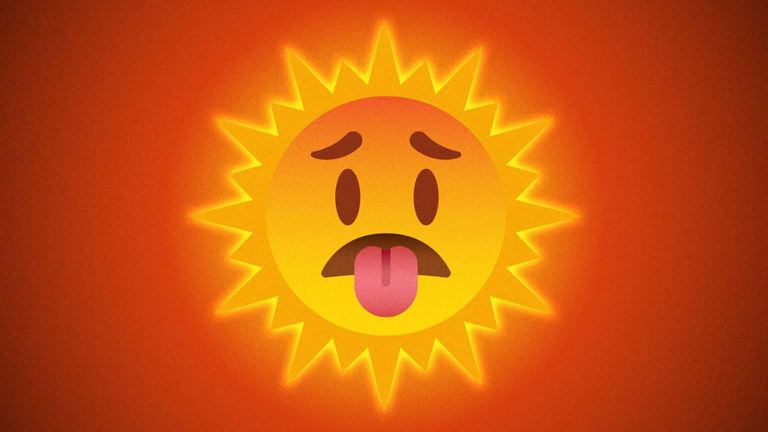New York City is no stranger to hot summers, but when a heat advisory hits, it’s a whole different ballgame. With temperatures climbing and humidity making it feel like you’re walking through a sauna, the city’s recent heat advisory has everyone on high alert. As of mid-July 2025, the National Weather Service (NWS) issued a heat advisory for NYC, with heat index values expected to reach between 95 and 100 degrees, and some spots even hotter. Here’s what you need to know to stay safe and cool during this scorching period.
Table of Contents
What Is a Heat Advisory?
A heat advisory is issued when the combination of heat and humidity makes it feel dangerously hot—typically when the heat index hits 95 to 99 degrees for two or more consecutive days, or 100 to 104 degrees for any length of time. In NYC, the NWS reported that on July 16 and 17, 2025, the heat index in areas like Manhattan and Brooklyn could feel as high as 100 degrees due to temperatures in the low 90s and sticky humidity. This kind of weather isn’t just uncomfortable; it can pose serious health risks, especially for vulnerable groups like the elderly, children, and those with medical conditions.
The advisory also comes with an air quality alert, as high temperatures often worsen pollution levels. The New York State Department of Health recommends limiting strenuous outdoor activities, particularly for those with respiratory issues or heart conditions. It’s a reminder that summer in the city isn’t just about beach trips and ice cream—it’s about staying vigilant.
The Impact of Extreme Heat in NYC
NYC’s concrete jungle amplifies the heat, thanks to the Urban Heat Island Effect. All that asphalt and concrete soak up the sun’s rays during the day and trap heat at night, preventing the city from cooling down. Some nights, the temperature difference between NYC and nearby suburbs can be as much as 20 degrees. This relentless heat can lead to power outages, as air conditioners work overtime, and Con Edison has already asked some neighborhoods to conserve energy to avoid straining the grid.
Heat is the number one weather-related killer in the U.S., and NYC sees about 370 heat-related deaths annually, mostly during heat waves. Neighborhoods like the South Bronx, Upper Manhattan, and Central Brooklyn are hit hardest due to factors like limited access to air conditioning, fewer trees, and higher pollution levels. Elderly residents are particularly at risk, making it crucial to check in on vulnerable neighbors.
Staying Safe During the Heat Advisory
So, how do you beat the heat in NYC? First, stay hydrated—drink water every 15 minutes, even if you’re not thirsty, and avoid sugary or caffeinated drinks. If you don’t have air conditioning at home, head to one of the city’s 496 cooling centers, found at libraries, community centers, and other public spaces. These are lifesavers, especially for seniors and those with health concerns. Set your AC to at least 78°F to stay cool without overloading the power grid.
If you must be outside, wear lightweight, loose-fitting clothing and take frequent breaks in the shade. Never leave kids or pets in cars—temperatures inside a parked car can skyrocket to deadly levels in minutes. And if you see signs of heat exhaustion, like heavy sweating or dizziness, get to a cool place and hydrate immediately. Heat stroke is even more serious, with symptoms like confusion or a rapid pulse—call 911 if you suspect it.
City Initiatives to Combat the Heat
New York City is stepping up to tackle extreme heat. The city’s Heat Emergency Plan includes outreach to at-risk residents and the installation of spray caps on fire hydrants in “Cool Streets” with dense tree cover. Governor Kathy Hochul declared a state of emergency for 32 counties, including all five boroughs, in June 2025, mobilizing resources like cooling centers and water rescue teams. The city’s PlaNYC aims to protect New Yorkers by 2030 with measures like mandatory cooling requirements for new buildings and expanding tree canopy cover to 30 percent.
The Department of Environmental Conservation also released urban heat island maps to help communities plan for future heat waves, which are expected to become more frequent and intense due to climate change. These efforts show the city is taking the threat seriously, but it’s up to residents to use these resources wisely.
Looking Ahead: A Hotter Future?
Climate experts warn that heat waves like this one are becoming more common. NYC saw its first heat wave of 2025 in June, with temperatures hitting 100 degrees in Central Park for the first time since 2012. Climate projections suggest that by the 2050s, the city could see up to 69 days a year with temperatures above 90 degrees, compared to 15 in a typical summer now. This early heat wave, the second in two years to hit before July, underscores the impact of global warming on our seasons.
As we brace for hotter summers, preparation is key. Sign up for Notify NYC to get real-time alerts about heat emergencies, and check the NWS website for the latest forecasts. Whether you’re hitting up a cooling center or just staying in with the AC on low, let’s keep looking out for each other to make it through this heat safely.
